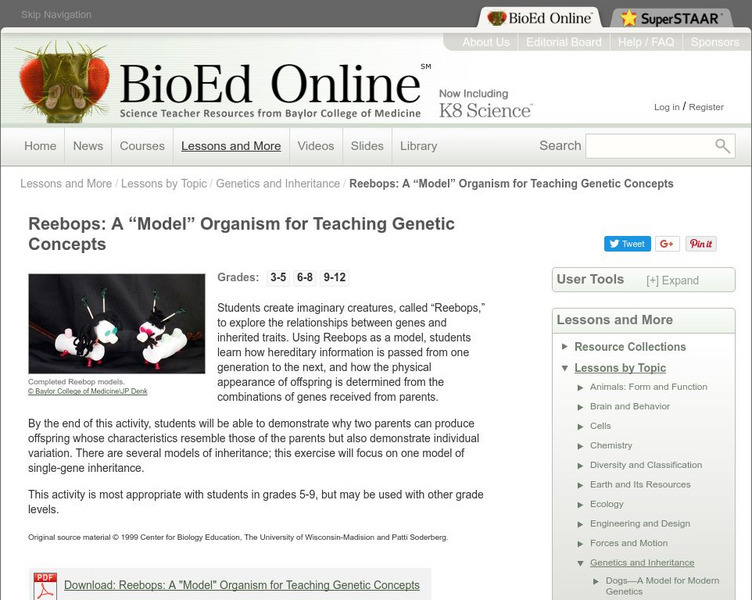Hi, what do you want to do?
Curated OER
Integration of Photography with Other Learning Experiences
Students studied photography in order to establish individual vision, creative thinking and writing skills while communicating ideas and emotions. They exhibit their work.
Curated OER
Using Technology For Vocabulary Development, reading Comprehension, and Word Identification
Fourth graders define unknown vocabulary words and decode unknown words in their reading using a Quicktionary Reading Pen and Franklin Spell Checker. They create reading comprehension questions that are incorporated into a classroom Web...
Curated OER
Prefix-Suffix Rummy
Pupils correctly build new words by adding a prefix and/or suffix to existing base words.
Curated OER
Creating a Timeline and Scanning a Photograph
Students create a timeline and scan pictures for it. In this timeline lesson plan, students use an interview of a family member to create a timeline for that person. They scan photographs to add to their computer made timeline.
Curated OER
Cooperative Classroom Text Features Activities
Fifth graders examine text features and create a PowerPoint presentation. In this text features lesson, 5th graders go over Kagan Cooperative Learning Structures and text features before they choose one to include in a book and...
Curated OER
Math Trailblazers and Their Modern Day Connections
There are many ways to connect math with topics your children are interested in.
Curated OER
News: Intermittent Explosive Disorder
Students discuss annoyances and read an article about intermittent explosive disorder. They complete worksheets and devise survey questions about annoying situations. They have classmates rate them from least to most bothersome.
TeachEngineering
Teach Engineering: Next Generation Surgical Tools in the Body
Through this unit, students act as engineers who are given the challenge to design laparoscopic surgical tools. After learning about human anatomy and physiology of the abdominopelvic cavity, especially as it applies to laparoscopic...
PBS
Pbs Learning Media: Bringing the Universe to America's Classrooms
WGBH in collaboration with NASA presents digital media resources you can use to teach topics in K-12 Earth and Space Science. These free resources are organized into four grade bands. Each resource emphasizes engaging students in...
BioEd Online
Bio Ed Online: Reebops: A "Model" Organism for Teaching Genetic Concepts
In this lesson students create imaginary creatures, called "Reebops," to explore the relationships between genes and inherited traits. Using Reebops as a model, students learn how hereditary information is passed from one generation to...
American Museum of Natural History
American Museum of Natural History: Five Tools and Processes for Translating the Ngss Into Instruction and Classroom
The Five Tools and Processes for Translating the NGSS are designed to help professional development leaders work with teachers on curriculum, instruction, and assessment as they achieve this vision. Click the link for each tool for an...
TeachEngineering
Teach Engineering: The Benefits of Biodiversity
First, students toss coins to determine what traits a set of mouse parents possess, such as fur color, body size, heat tolerance, and running speed. Next they use coin tossing to determine the traits a mouse pup born to these parents...
TeachEngineering
Teach Engineering: Nano Tech: Insights Into a Nano Sized World
Through two lessons and four activities, students learn about nanotechnology, its extreme smallness, and its vast and growing applications in our world. Embedded within the unit is a broader introduction to the field of material science...
Other
National Association of Conservation Districts: Dig Deeper:mysteries in the Soil
A collection of facts, lesson resources, and links for teaching the science of soil. The teacher's guide includes overviews for each grade level booklet, next generation science standards, activities, vocabulary words, literature...
NASA
Nasa: Light but Strong
Use these lessons from NASA to teach multiple Next Generation Science Standards for grades K-5. Properties of matter and engineering design are the focus of these lessons. Detailed plans and student handouts are included. [PDF]
A&E Television
History.com: History on a Plate: How Native American Diets Shifted After European Colonization
For centuries, Indigenous people's diets were totally based on what could be harvested locally. Then white settlers arrived from Europe. Native people pass down information - including food traditions - from one generation to the next...
















